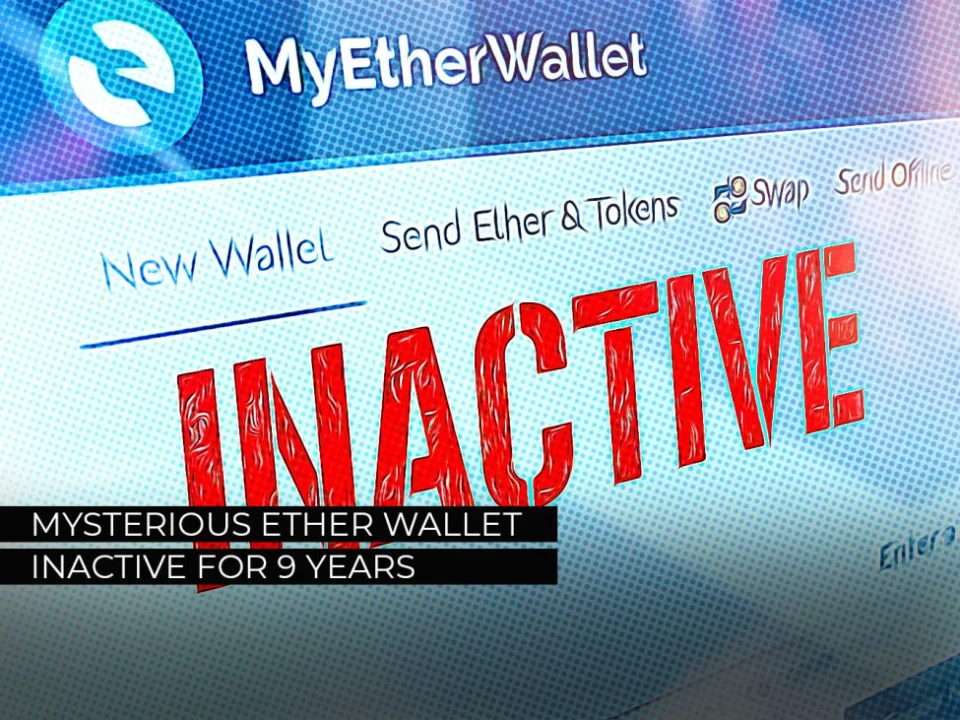In a surprising turn of events, an Ether wallet that has remained inactive for an astonishing 9 years has recently been discovered. This unusual find has sparked a flurry of intrigue and speculation within the Ethereum community. Some believe that the reasons behind the prolonged inactivity could be linked to forgotten passwords or lost private keys. Others are curious about the potential implications of this dormant Ether wallet on current market dynamics. As the mystery unravels, the Ethereum community eagerly awaits any clues that might shed light on this enigmatic wallet owner.
The Discovery of the Inactive Wallet

In a recent turn of events, the Ethereum community unearthed a mysterious Ether wallet that has remained inactive for an astonishing nine years. This discovery has caused a stir due to the sheer amount of Ether stored within the wallet. The wallet, first identified by blockchain analysts, holds a significant amount of Ether, sparking widespread curiosity.
Key Points of Discovery:
Timeframe:
- Inactive for 9 years
- Dates back to the early days of Ethereum
Value:
- Contains a substantial amount of Ether
- Potentially valued in millions
Source:
- Identified by blockchain analysts
- No transactions recorded since its creation
Why It Matters
The discovery has led to several questions within the community. Analysts speculate whether this wallet belongs to an early adopter who lost access, or perhaps someone purposefully left the Ether untouched. Either way, the dormant wealth has added an element of intrigue to the history of Ethereum.
Understanding the origins and status of such a considerable sum of Ether could potentially influence market perceptions and the strategies of current Ether holders.
Potential Reasons for the Inactivity
The inactivity of the Ether wallet for 9 years raises numerous questions. Several potential reasons might explain this extended dormancy:
Loss of Private Key: One possible reason for the inactivity is that the owner lost access to their private key. Without it, they cannot access or transfer the Ether stored in the wallet.
Long-term Investment Strategy: Another theory is that the owner is intentionally holding their Ether as a long-term investment. By keeping the Ether untouched, they might be waiting for the cryptocurrency’s value to rise significantly before making any transactions.
Technical Issues: It is possible that technical issues have prevented the owner from accessing the wallet. This might include outdated software or hardware failures.
Legal or Investigative Reasons: Occasionally, wallets become inactive due to ongoing legal disputes or investigations. Authorities might have frozen the wallet until a case resolves.
Personal Circumstances: The owner could be experiencing personal issues such as health problems or even death, preventing them from managing their Ether holdings.
The true reason remains speculative, though each of these possibilities provides logical explanations for the prolonged inactivity.
Impact on the Ethereum Community
The discovery of a dormant Ether wallet inactive for nine years has significantly stirred the Ethereum community. Firstly, the inactivity of such a substantial wallet raises questions about security. Could there be more secure ways to store Ether long-term? Consequently, developers and users alike are exploring more robust security measures, thereby fostering innovation.
Additionally, this dormant wallet, containing a large sum of Ether, affects market dynamics. Here’s why:
- Supply Insights: Knowing about the inactive Ether affects perceptions of available supply.
- Market Stability: If reactivated, it could significantly influence Ether prices, impacting both traders and long-term holders.
Moreover, discussions about the possible reactivation and subsequent usage of the Ether within this wallet have increased. This has provided valuable talking points for Ethereum developers, analysts, and enthusiasts as they speculate on future market scenarios.
Overall, this surprising discovery underscores not only the importance of secure storage but also the effects on market stability and community discussions.
Speculations about the Wallet Owner
The identity of the owner of the inactive Ether wallet has sparked numerous theories within the crypto community. Below are a few popular speculations:
- Early Investor: Some believe the wallet belongs to one of the early investors in Ethereum who bought Ether during the initial crowdsale.
- Lost Keys: Another prevailing theory suggests that the owner lost access to the wallet’s private keys, making it impossible to transfer the Ether.
- Long-term Holder: There is also the possibility that the owner is a long-term holder deliberately waiting for an opportune moment to access the funds.
- Institutional Stake: Some speculate that the wallet could belong to an institution that remains inactive to avoid market volatility impacts.
While these speculations keep the community buzzing, the mystery surrounding the wallet’s owner adds another intriguing layer to the world of Ethereum and its enthusiasts. Feasibly, the true identity might never be uncovered unless the Ether is eventually moved.
Frequently Asked Questions
What is the mysterious Ether wallet that has been inactive for 9 years?
The mysterious Ether wallet refers to an Ethereum wallet that has not participated in any transactions for the past nine years. It has intrigued many in the crypto community because significant amounts of Ether have remained untouched in this wallet, leading to speculations about its owner and the reasons for its prolonged inactivity.
Why is the inactivity of this Ether wallet considered mysterious?
The prolonged inactivity of the wallet is considered mysterious for several reasons. Given that Ethereum is one of the most actively traded and invested cryptocurrencies, it’s unusual for a wallet containing a significant amount of Ether to remain dormant for such an extended period. Moreover, the anonymity surrounding the wallet’s owner adds to the intrigue, raising questions about whether the keys have been lost, forgotten, or intentionally left untouched.
What could be the possible reasons for the inactivity of this wallet?
There are several possible explanations for the inactivity. One potential reason could be that the private keys to the wallet have been lost, making it impossible for the owner to access the funds. Another theory is that the owner might have passed away or simply forgotten about the wallet. There is also speculation that it could be an intentional strategy by the owner, either as a long-term investment or due to legal or security concerns.
How has the crypto community reacted to the discovery of this inactive Ether wallet?
The crypto community has reacted with a mix of fascination and curiosity. Some members have attempted to delve into blockchain data to uncover more about the wallet’s history and possible connections. Others have used the case to discuss the importance of safeguarding private keys and the implications of lost cryptocurrency funds. The wallet has sparked broader conversations about the long-term storage and the potential inactivity within the vast ecosystem of digital currencies.







